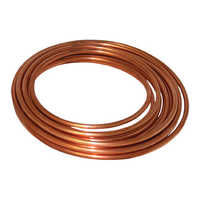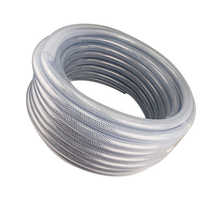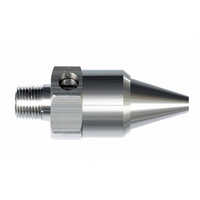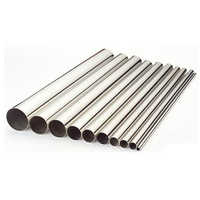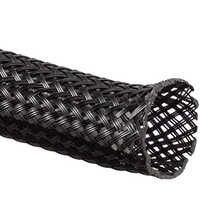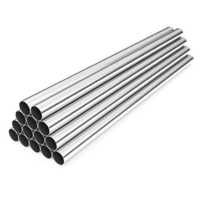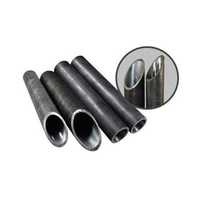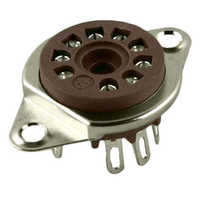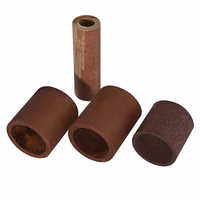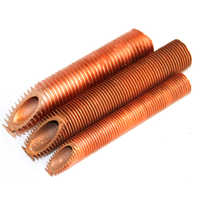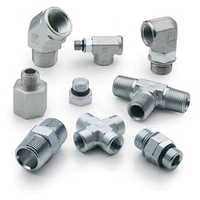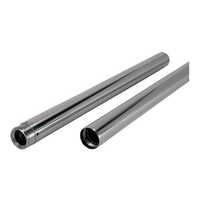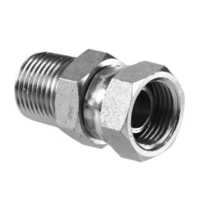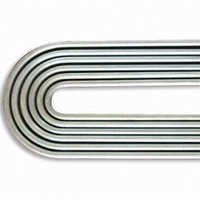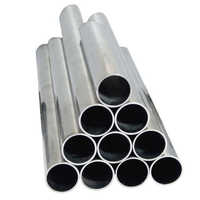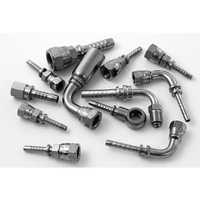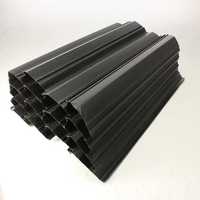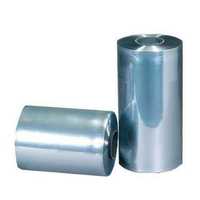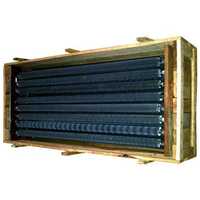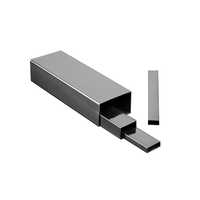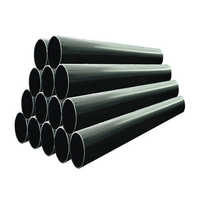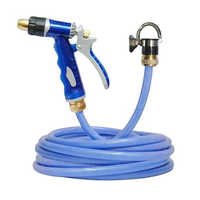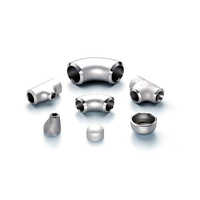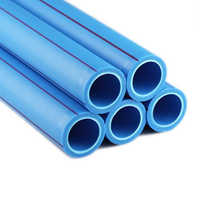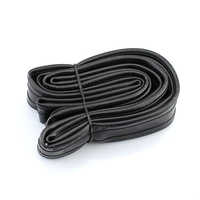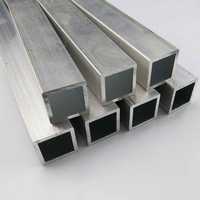Tubes & Tube Fittings
(5232 products)
Related Categories
Alloy Steel Flanges
Alloy Steel Pipes & Tubes
Aluminium Pipes & Tubes
Brass Pipe Fittings
Brass Pipes & Tubes
Carbon Steel Flanges
Carbon Steel Pipes & Tubes
Cast Iron Pipes
Copper Pipes & Fittings
ERW Pipes & Tubes
Flanges
Forged Pipe Fittings
GI Pipe Fittings
Galvanized Pipes & Tubes
HDPE Pipe Fittings
HDPE Pipes
Metal Pipes & Tubes
Mild Steel Pipes & Tubes
Nickel Flanges
Nickel Pipes & Tubes
PVC Pipe Fittings
PVC Pipes
Pipe Elbows
Pipes & Pipe Fittings
Plastic Pipes
Plastic Tubes
Rotary Unions & Joints
Round Bars
Scaffolding Pipes & Tubes
Socket Weld Fittings
Stainless Steel Flanges
Stainless Steel Pipes
Stainless Steel Tubes
Steel Pipes & Tubes
Titanium Pipes & Tubes
Tubes & Tube Fittings
Top Tubes & Tube FittingsCategories
Explore More Categories
Silver Tube Fittings
MOQ - 100 Piece/Pieces
Product Type - Other
Material - Stainless Steel
Surface Treatment - Galvanized
14 Years
Business Type: Manufacturer | Supplier
JSN ENTERPRISE
Pneumatic Spiral Tube
Price: 4.80 INR (Approx.)/Meter
MOQ - 5000 Meter/Meters
Product Type - Pneumatic Spiral Tube
5 Years
Business Type: Supplier | Trading Company
ROSUB ENGINEERING LLP
Indian Inquiries Only
Alloy Ams 6304 (17-22A) Uns K14675 Tube
Price: 5000 INR (Approx.)/Number
MOQ - 1 Number
Product Type - Other
Material - Alloy
Shape - Round
3 Years
Business Type: Manufacturer | Distributor
JAYANT IMPEX PVT LTD
Silicone Braided Hose
Price: 250 INR (Approx.)/Meter
MOQ - 100 Meter
15 Years
Business Type: Manufacturer | Supplier
POLYERUBB INDUSTRIES
Black & Blue Air Diffuser
Price: 565 INR (Approx.)/Piece
MOQ - 8 Piece/Pieces
Product Type - Other
Color - Black & Blue
14 Years
Response Rate: 80.65%
Business Type: Manufacturer | Exporter
RE BLOWERS INDIA PRIVATE LIMITED
Silicon Round Tube
Price: 525.00 INR (Approx.)/Piece
MOQ - 25 Piece/Pieces
18 Years
Response Rate: 87.76%
Business Type: Manufacturer | Exporter
Satyanarayan Rubber and Plastic Industries
Drawn Over Mandrel Tubes Length: 6 To 8 Meter (M)
MOQ - 3 Ton/Tons
Product Type - Other
Material - Carbon Steel
Type - Welded
2 Years
Business Type: Manufacturer | Exporter
GOODLUCK INDIA LIMITED
Multicolour Colored Pu Tubes
MOQ - 1 Piece/Pieces
Material - Plastic
Shape - Round
Grade - Premium
13 Years
Business Type: Manufacturer | Distributor
VIRAL ENTERPRISE
Carbon Steel Copper Fins Tube
Price: 100000 INR (Approx.)/Unit
MOQ - 1 Unit/Units
Material - Carbon Steel
21 Years
Business Type: Manufacturer | Exporter
SUNRISE PROCESS EQUIPMENTS PRIVATE LIMITED
Gas Tubing for Laboratory
Price: 9000.00 - 80000.00 INR (Approx.)/Piece
MOQ - 1 Piece/Pieces
15 Years
Business Type: Manufacturer
CHEMIX SPECIALITY GASES AND EQUIPMENTS
Indian Inquiries Only
Cew Precision Tubes Grade: Multi Grade
MOQ - 100 Kilograms/Kilograms
Material - Stainless Steel
Type - Seamless
Shape - Round
2 Years
Business Type: Manufacturer
Pheonix Precision Tubes LLP
Indian Inquiries Only
Ptfe Extruded Tubes Density: 2.1 Gram Per Cubic Meter (G/M3)
Price: 2000 INR (Approx.)/Kilograms
MOQ - 10 Kilograms/Kilograms
Type - Extruded
Working Temperature - 250 Celsius (oC)
Density - 2.1 Gram per cubic meter (g/m3)
18 Years
Business Type: Manufacturer | Exporter
SANGHVI TECHNO PRODUCTS
Indian Inquiries Only
Black & White Polyamide Nylon Tube
Price: 600 INR (Approx.)/Meter
MOQ - 500 Meter
Product Type - Other, Nylon Tube
Material - Plastic
Shape - Round
3 Years
Business Type: Trading Company
DIVYA JYOT PIPE STORES
Indian Inquiries Only
Silver Fittings Parts
Price: 20 INR (Approx.)/Piece
MOQ - 500 Piece/Pieces
Product Type - Fittings Parts, Other
Material - Stainless Steel
Type - Welded
7 Years
Business Type: Manufacturer
VINAY ENGINEERING COMPANY
Lightweight and Durable Aluminium Tube
Price: 290 INR (Approx.)/Kilograms
Material - Alluminium
Shape - Round
Color - Silver
7 Years
Business Type: Manufacturer | Exporter
RENAISSANCE FITTINGS & PIPING INC.
Verified Exporter
( Accepts only Foreign Inquiry)
8MM To 108MM Medical Degreased Copper Tubes
Product Type - Copper Tubes
Material - Copper
Shape - Round
2 Years
Business Type: Manufacturer | Distributor
BESTECH TECHNOLOGIES CO., LTD.
Stainless Steel Seamless Tubes Application: Industrial And Household
Price: 130.00 - 200.00 INR (Approx.)/Meter
MOQ - 1000 Meter/Meters
6 Years
Response Rate: 87.27%
Business Type: Manufacturer | Distributor
HI-TECH METAL & TUBES
Gray Rectangular Finned Tubes
Price: 900 INR (Approx.)/Piece
MOQ - 50 Piece/Pieces
Product Type - Other, Finned Tubes
Material - Stainless Steel
Shape - Rectangular
19 Years
Business Type: Manufacturer | Exporter
AAB HEAT EXCHANGERS PVT. LTD.
Silver Ss Pipe
Price: 225 INR (Approx.)/Kilograms
MOQ - 100 Kilograms/Kilograms
Material - Stainless Steel
Type - Welded
Shape - Round
Business Type: Manufacturer | Distributor
PARMAR STEEL
Tube Bundle
Price: 2000 INR (Approx.)/Piece
MOQ - 5 Piece/Pieces
21 Years
Business Type: Manufacturer | Supplier
BADRIN INDUSTRIES
Ro Round Tubing Grade: First Class
MOQ - 30 Square Foot/Square Foots
Material - Other
Type - Seamless
Shape - Round
8 Years
Business Type: Manufacturer | Distributor
SETHI & SONS INDUSTRIES
Indian Inquiries Only
Corrosion Resistant MS Ready To Honed Tube
Price: 80 INR (Approx.)/Kilograms
MOQ - 100 Kilograms/Kilograms
Material - Carbon Steel
Type - Seamless
Shape - Round
2 Years
Business Type: Manufacturer | Distributor
SEEMSAN TUBES
Tubes & Tube Fittings Manufacturers | Suppliers in India
| Company Name | Location | Member Since |
|---|---|---|
| Niko Steel And Engineering Llp | Mumbai, India | 21 Years |
| Sunrise Process Equipments Private Limited | Mumbai, India | 21 Years |
| Badrin Industries | Chennai, India | 21 Years |
| Taj Industries | Rajkot, India | 19 Years |
| Aab Heat Exchangers Pvt. Ltd. | Faridabad, India | 19 Years |
| Satyanarayan Rubber And Plastic Industries | Ahmedabad, India | 18 Years |
| Sanghvi Techno Products | Ahmedabad, India | 18 Years |
| Shree Darshan Pipes | Bhiwandi, India | 17 Years |
| Polyerubb Industries | Ahmedabad, India | 15 Years |
| Chemix Speciality Gases And Equipments | Bengaluru, India | 15 Years |
Tube Fittings - Introduction
Tubes, like pipes, are tubular conduits that are used to transport fluids in an enclosed system. Metallic tubing is typically produced via rolling or extrusion although plastic is a common tube material for many industrial applications.
Common techniques for connecting tubes are discussed below and joining tube ends to equipment such as pressure instrument.
Tube, in contrast to pipe, does not include threads at either end to facilitate connections. Instead, you'll need something called a tube fitting to join two tubes, or a pipe, or an appliance, together such as an instrument.
Tubes, in contrast to pipes, have thin walls. Typical tubes do not have sufficient wall thickness to support threads.
If you need a small diameter pipe, tubes is the way to go. Tube is commonly used to link instruments to process pipework because it can be easily cut and bent by competent workers using simple hand tools, and because connections may be made and broken frequently without compromising the integrity of the seals.
Used to transmit signals between a measuring device and a process pipe or vessel, these tubes are often called impulse tubes or impulse lines.
Different Types of Tube Fittings:
There are a number of ways to connect fittings to tubes, and each one has its own advantages.
1. Threaded fittings
Screw threads, also known as built-in grooves, are located on the inner (female) or outer (male) surfaces of threaded fittings. These threads are designed to receive tubing that has matching threads.
Straight threads are those that offer a straightforward connection but do not create a seal in any way. Tapered threads are created to offer a secure seal for pressurized gases or fluids in a variety of applications.
The reliability of a seal can be improved by applying Tube and Tube Fittings and coating or using seal tape (Teflon). "Dry fit" threads are so-called because they create a seal without the use of any additional sealant. This is an advantage in situations where the presence of sealant could lead to contamination or corrosion.
The diameter of the thread is determined by the measurement taken on the inside of the tube or pipe. An excellent summary of pipe thread sizing can be found in the fact that each standard corresponds to a particular number of threads per inch.
2. Push-to-connect or quick coupler fitting
Fittings known as push-to-connect or quick couplers have ends that are constructed to take tubing by simply pushing it into the end of the fitting.
In most cases, these fittings are disengaged by the use of a collar retraction mechanism. When areas of the system require frequent separation and reconnection, it is convenient to have quick connections in such sections.
3. Luer locks
By means of a simple twisting motion, Luer locks, which are sleeve fittings, make it possible to create reliable connections that are both straightforward and temporary. Applications in the medical field and laboratories make up the vast majority of its usage.
4. Flanges fittings
Ports with flush surfaces that are perpendicular to the tube they are attached to are known as flange fittings. These surfaces are clamped, bolted, or welded together, depending on the method used, and then sealed.
5. Compression fitting
Compression fittings are a type of fitting that are used to join tubes together by applying pressure to a gasket, ring, or ferrule. Compression is commonly achieved by firmly tightening a nut that is attached to the fitting and placed over the tubing and ferrule.
This does double duty by both compressing the tubing and securing it inside the fitting. Because standard compression fittings may be put together without the need of any additional tools, their assembly is straightforward and uncomplicated.
However, they are not able to tolerate very high pressures and do not have as much flexibility as soldered fittings, which makes them less effective in systems that are subjected to vibration, temperature cycling, and other types of dynamic forces.
They are also available in a limited number of materials, the most common of which being brass, and they are most effective when used for connections between metals.
6. Mechanical grip fitting
Two-ferrule assemblies are what mechanical grip fittings are called. The tubing is held in place by the back ferrule, which also presses up against the front ferrule. This action loads the front ferrule with spring tension and produces a seal between the tubing and the fitting body.
These fittings may be disassembled and reassembled an unlimited number of times without causing any damage to the components or tubing. They offer a high level of protection against mechanical vibration.
7. Bite type fitting
Compressive fittings of the bite type feature a pointed ferrule that, when compressed, "bites" the tube and creates a seal. This form of fitting is known as a bite-type fitting.
The assembly of bite-type fittings, much like the assembly of ordinary compressive fittings, does not require any specialized equipment but results in a connection that is both more robust and able to withstand higher pressures.
8. Flare fittings
Flare fittings are made up of a body that has an end that is either flared or coned. Installing the tube such that it fits inside the flared end requires the use of specialized flaring tools, which ultimately results in a more robust seal.
In comparison to ordinary compression fittings, flare fittings are better able to withstand higher pressures and a broader range of operating parameters.
Usage of Tube Fittings
Here are the top ways that tube fittings are used.
1. Building Construction
Their drainage capabilities extend beyond just water to include the removal of wastewater. They are adaptable for use in the distribution of natural gas. You can install them to carry water to your water heater or other home equipment like washing machines.
Water and sewage are typically piped into homes via tubes. Even oil and grease, which can be either hot or cold, can be piped around the insides of buildings via tubes.
They facilitate the transfer of coolant fluid between the car's condenser and evaporator coil and are thus commonly used in automobile air conditioning systems.
2. oil and gas industry
The oil and gas sector relies on well-fitting tubes for the safe and efficient delivery of hydrocarbons. In addition to being used for natural gas, they are also put to use with water, sewage, and other liquids and gases.
Polypropylene tubes , for instance, can carry water, whereas polypropylene tubes fittings find application in the oil and gas sector. Polypropylene, a form of plastic, is both inexpensive and durable, making it a great choice for use in the oil industry.
3. Food and beverage industry
When it comes to financial outlays, the food and beverage industry ranks among the highest among all other industries around the world. Many businesses involved in the production of food and drink have begun outfitting their facilities with tubes and fittings in an effort to reduce operating expenses.
They accomplish this due to the fact that these tube fittings are inexpensive, long-lasting, lightweight, resistant to corrosion, simple to install, recyclable, and can be utilized for a wide variety of purposes.
4. Chemical industry
In chemical plants, tubes and fittings are one of the most useful types of materials for the transportation of chemicals. Because of the material's resistance to corrosion, its flexibility, and its capacity to sustain high pressure, this is possible.
Moving steam between different types of heating systems. removing cooling water from devices such as condensers and chillers and transporting it.
Connecting machines that produce heat or pressure, such as pumps, compressors, boilers, or any other equipment that works under high temperatures or pressures, is called "connecting equipment that generates heat or pressure.
5. Fittings in Automotive
The usage of tubes and fittings in the automotive industry includes applications such as use as a material for gaskets, use as a product for gasoline hoses, use in radiator repair parts, and use to build watertight seals.
Tubes and fittings can be used for a wide variety of purposes, and the automobile industry is one of the main consumers of these components. They are used for making gaskets, repairing radiators, replacing brake lines and fuel hoses, and repairing radiators.
They are utilized by some businesses in order to manufacture waterproof seals on the doors or hatchbacks of their products. The automotive industry makes extensive use of a wide variety of flexible materials, some examples of which are listed above.
How do Tube Fittings Work?
- The basic operation of tube and fitting fittings is as follows:
- Tubes and fittings are frequently manufactured for certain temperature ranges, and pressure ranges are determined by the application.
- The operating pressure range describes the pressure categories or levels that the fitting is designed to withstand. The amount of pressure exerted during operation is often given in terms of pounds per square inch. If the fitting is utilized beyond or below its rated capacity, it runs the risk of failing for instance, it may crack, leak, or lose its seal.
- The operational temperature range, given in either degrees Celsius (°C) or degrees Fahrenheit (°F), indicates the maximum temperature and temperature ranges that the fitting is meant to work in. If you operate the fitting at or below this grade, there is a risk that it will fail.
- Tubes and fittings can have additional features and capabilities added to them so that they can fulfill the requirements of various applications.
- Tube connectors are known as fittings, and they are installed on both sides of a barrier, such as a wall or bulkhead.
- Tube sections can be joined together using expansion joints and couplings, which also allow for movement in response to changes in service stress, load, or temperature.
- In fittings with a liner, the lining is created as an integrated part of the fitting. Linings are often fabricated out of specialized polymers, and they are used either with the process materials themselves or in situations where proper media sanitation is of the utmost importance, such as food processing.
- Plated fittings can have their surfaces treated, plated, or coated to increase thermal characteristics, corrosion resistance, chemical endurance, or other desirable surface features Because of the swivel capability, one or more of the fitting ends have the ability to rotate 360 degrees.
- It is possible to handle the most fundamental aspect of tubes fittings, which is adequate sizing. The correct sizing of tubes fittings is essential to an excellent fitting preference. This is due to the fact that larger or undersized pieces are either completely incompatible with one another or fail to seal or join efficiently.
As a result of its high degree of adaptability and user-friendliness, tubes and fittings can be included into a wide variety of systems. Tubes fittings and pipes are the superior options for any plumbing project, be it an update to an existing system or the construction of a totally new one using this material.
FAQs: Tubes & Tube Fitting
Q. Top Manufacturers and Suppliers of Tube Fittings?
Ans: Alloyed SustainablesLlp, A V I International, and Nk Group Of Industries are the top Manufacturers and Suppliers of Tube Fittings.
Q. How to Select Tube Fittings?
Ans: Here is something to consider while selecting tube fitting:
-
Material
-
Build Quality
-
Fitting Type
-
Size
-
Brand
-
And Price
Q. Is pipe or tubing cheaper?
Ans: Most of the time, tubing is easier and cheaper to install than pipes. After cutting the tubing to the right length and smoothing the edges, the fittings are screwed onto a nut.
Q. What is tube and fitting?
Ans: Tube fittings are used to connect sections of tubing that are in-line, offset, multi-port, or mounted to other sections of tubing, pipe, hose, or other parts.
Q. What is the difference between tube & fitting?
Ans: A fitting is any component used in a piping system to effect a change in the pipe's diameter, branch off in a new direction, or change the direction of the pipe itself. Tube fittings, on the other hand, are made up of, well, tubing and fittings.
Q. What are tube fittings examples?
Ans: Elbow, Cap, Sleeve, Coupling, and others are some examples of tube fittings.
Q. What are the materials used in the tube?
Ans: Brass, Aluminum, Copper, Cast Iron, Steel, PVC, and ABS are the common materials used in making tubes.
Related Categories
Related Categories
Alloy Steel Flanges
Alloy Steel Pipes & Tubes
Aluminium Pipes & Tubes
Brass Pipe Fittings
Brass Pipes & Tubes
Carbon Steel Flanges
Carbon Steel Pipes & Tubes
Cast Iron Pipes
Copper Pipes & Fittings
ERW Pipes & Tubes
Flanges
Forged Pipe Fittings
GI Pipe Fittings
Galvanized Pipes & Tubes
HDPE Pipe Fittings
HDPE Pipes
Metal Pipes & Tubes
Mild Steel Pipes & Tubes
Nickel Flanges
Nickel Pipes & Tubes
PVC Pipe Fittings
PVC Pipes
Pipe Elbows
Pipes & Pipe Fittings
Plastic Pipes
Plastic Tubes
Rotary Unions & Joints
Round Bars
Scaffolding Pipes & Tubes
Socket Weld Fittings
Stainless Steel Flanges
Stainless Steel Pipes
Stainless Steel Tubes
Steel Pipes & Tubes
Titanium Pipes & Tubes
Tubes & Tube Fittings
